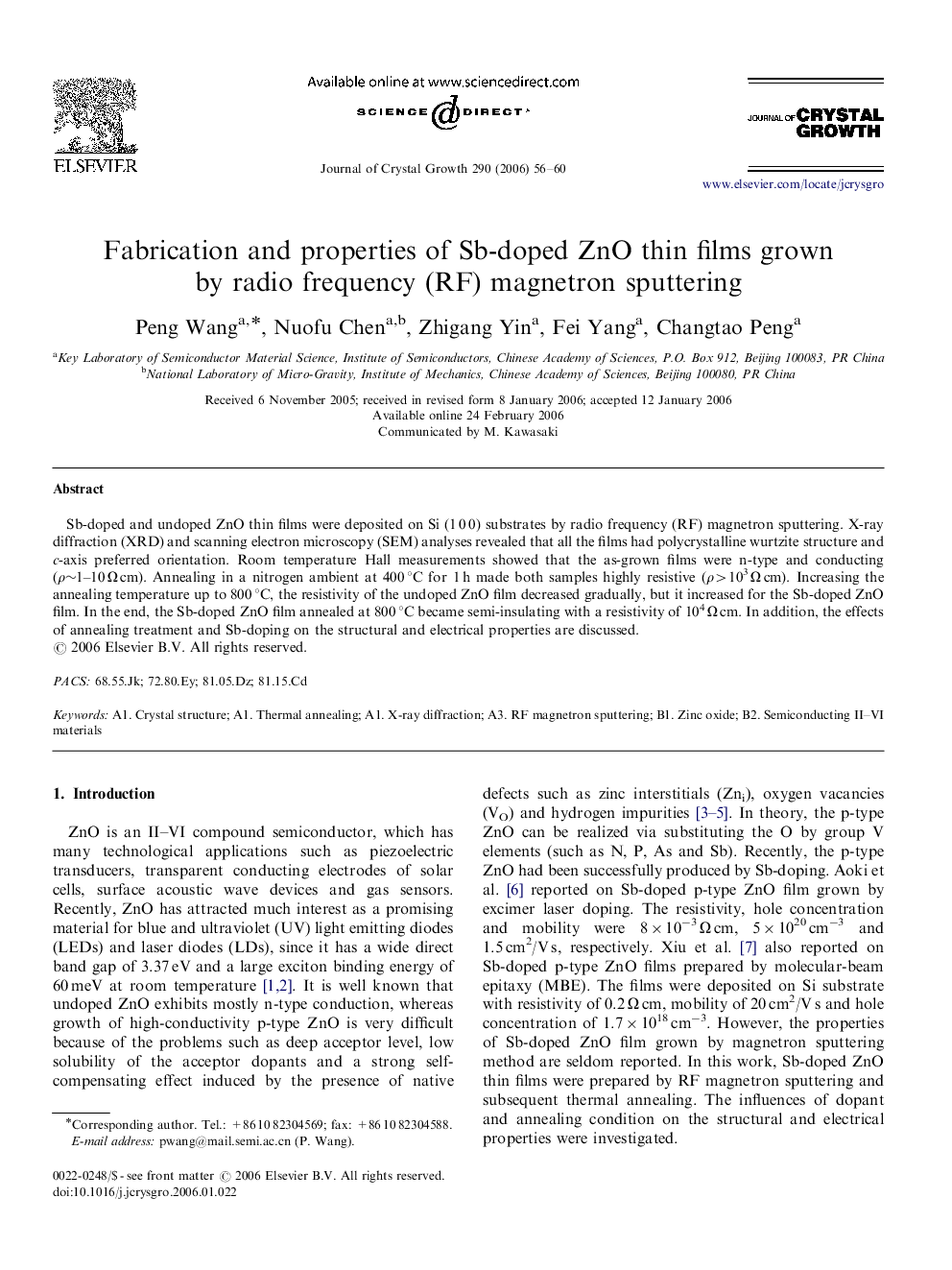| Article ID | Journal | Published Year | Pages | File Type |
|---|---|---|---|---|
| 1797321 | Journal of Crystal Growth | 2006 | 5 Pages |
Sb-doped and undoped ZnO thin films were deposited on Si (1 0 0) substrates by radio frequency (RF) magnetron sputtering. X-ray diffraction (XRD) and scanning electron microscopy (SEM) analyses revealed that all the films had polycrystalline wurtzite structure and c-axis preferred orientation. Room temperature Hall measurements showed that the as-grown films were n-type and conducting (ρ∼1–10 Ω cm). Annealing in a nitrogen ambient at 400 °C for 1 h made both samples highly resistive (ρ>103 Ω cm). Increasing the annealing temperature up to 800 °C, the resistivity of the undoped ZnO film decreased gradually, but it increased for the Sb-doped ZnO film. In the end, the Sb-doped ZnO film annealed at 800 °C became semi-insulating with a resistivity of 104 Ω cm. In addition, the effects of annealing treatment and Sb-doping on the structural and electrical properties are discussed.
